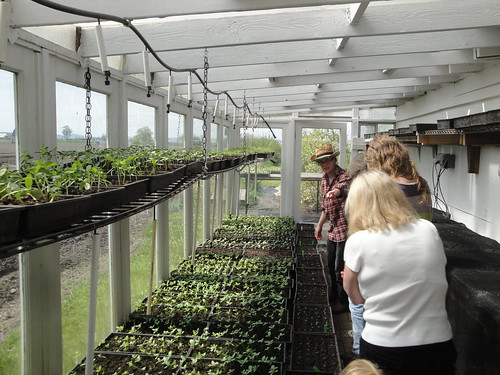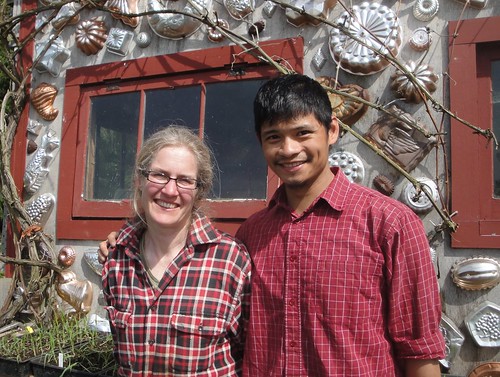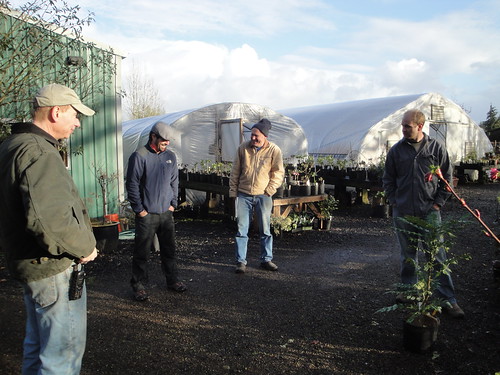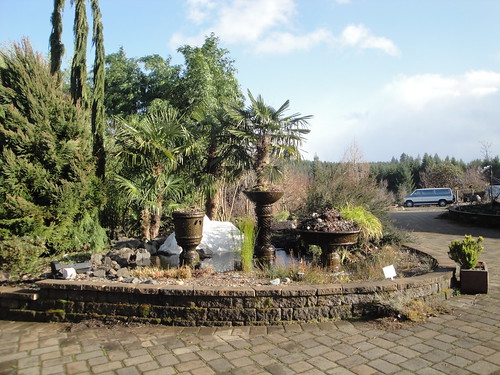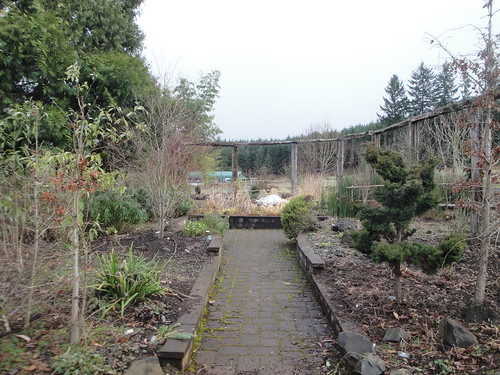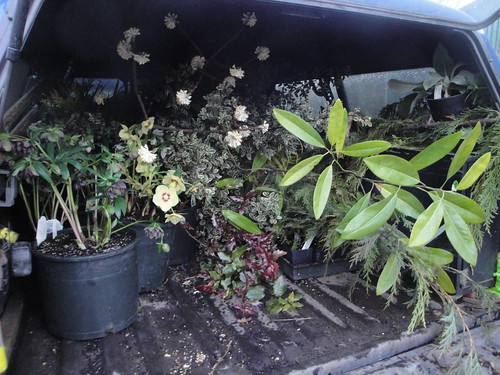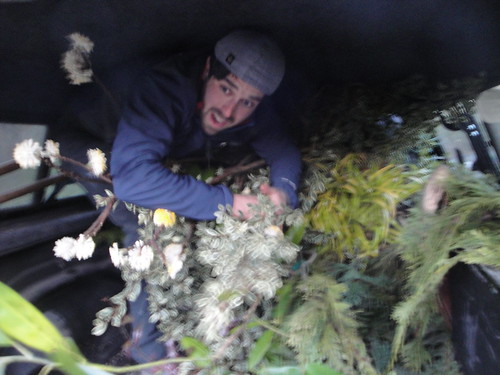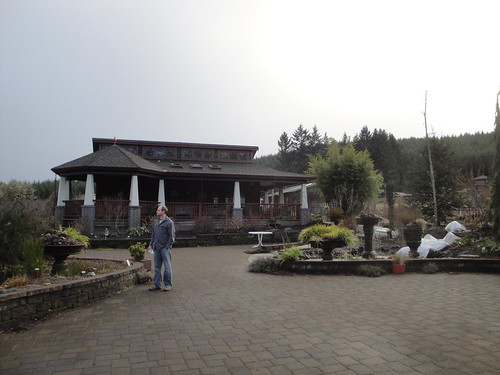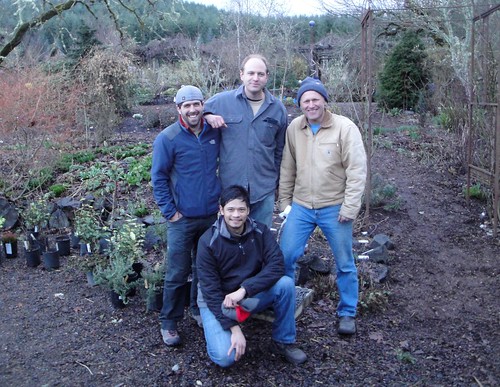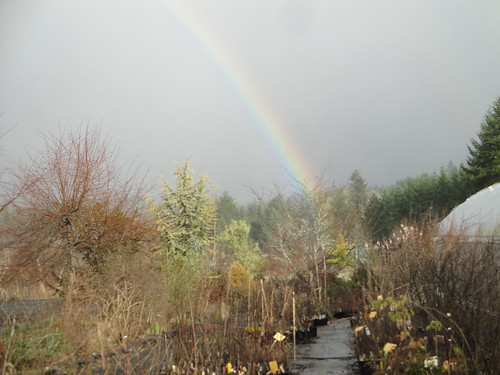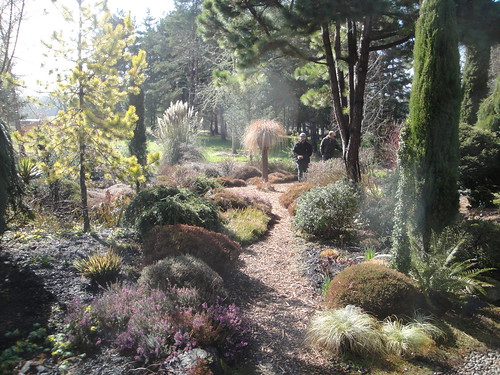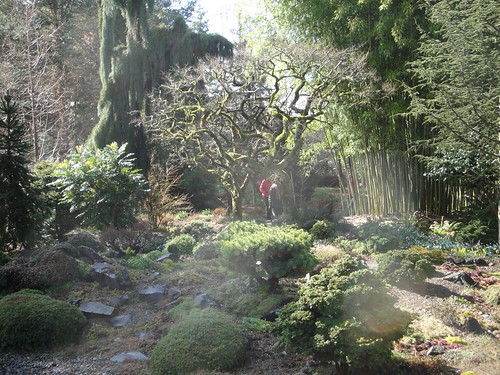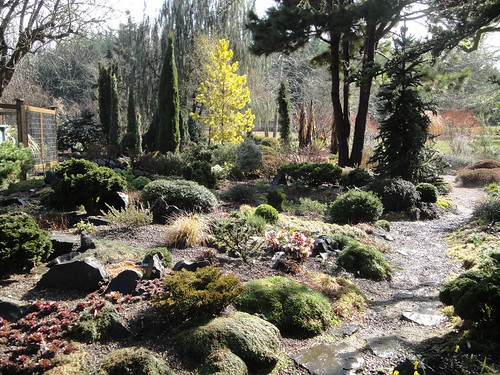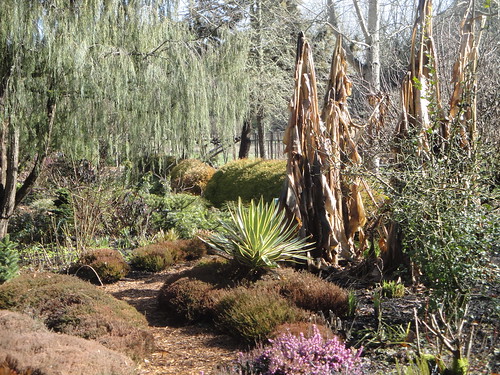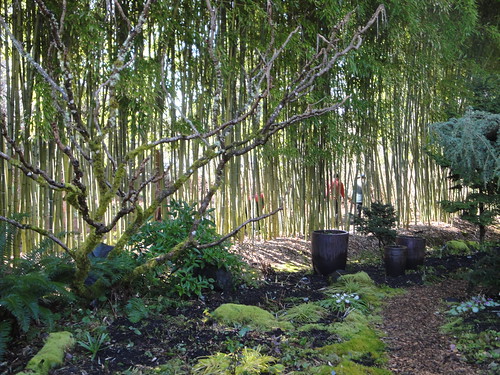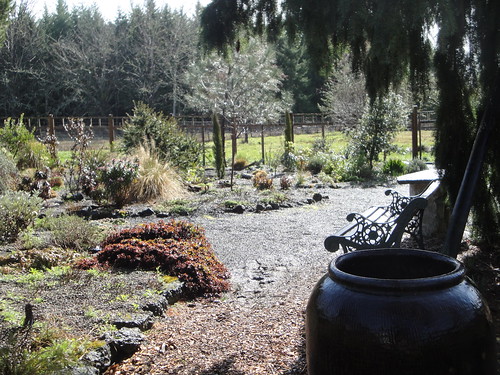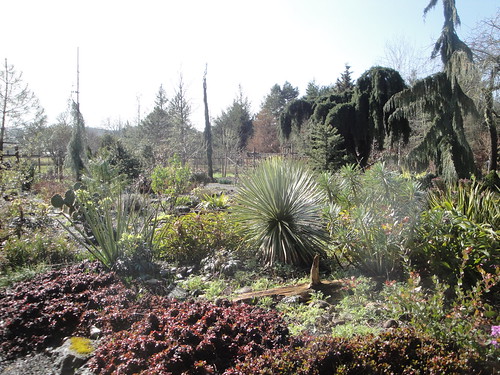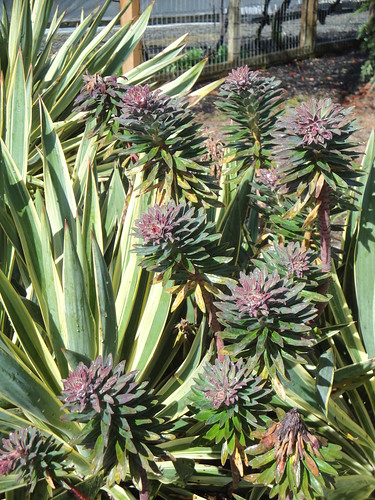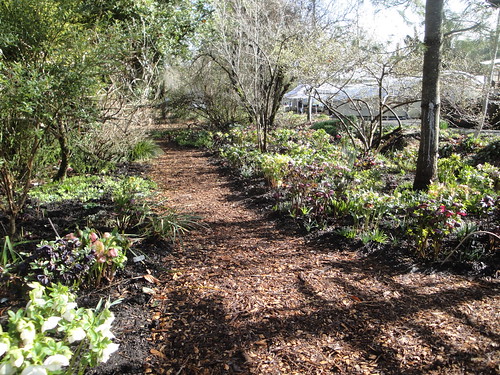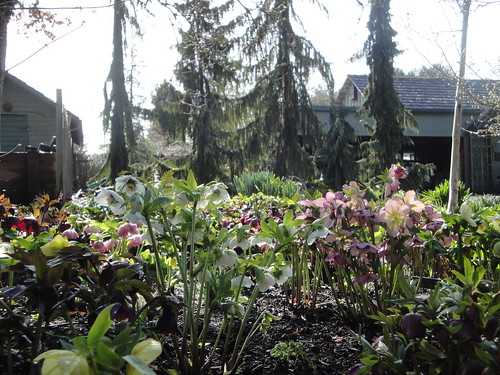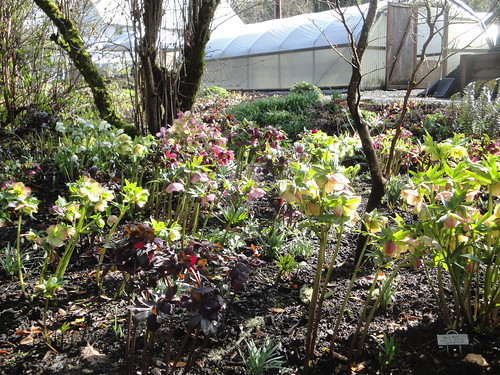 |
| A plate of hellebores from Northwest Garden Nursery |
First, I want to write about the different types of hellebores one would encounter at a large garden center. There are two main types that are distinguished by their growth habit: stemmed (caulescent) or stemless (acaulescent).
Caulescent types emerge from the ground and have a prominent stem with attached alternating leaves and the clusters of flowers up top. H. argutifolius is an example (the green ones in the photo on the right and all the foliage you see is attached to the main stem with the flowers up top)
Acaulescent hellebores do not form a stem with foliage, but instead, all the foliage and flowering stems emerge from the base of the plant. The "orientalis" type of hellebores are the most common. (the pink flowered ones on the photo)
Now, between the two basic growth habits, there are hybrids between the two types creating varieties that possess some of the qualities of both resulting in vigorous and hardy garden plants.
 |
| Helleborus x ballardiae 'Pink Frost' |
I've found that all types of hellebores have a difficult time standing up when cut for a vase. There are many tricks that have proven to be effective such as:
1. Dip cut ends in hot boiling water for a few seconds.
2. Flame the cut ends for a few seconds to supposedly "seal in" the moisture
3. Slice bottom end lengthwise an inch or so to maximize water uptake. (Mentioned by Val Easton on her blog. She wrote a book called "Petal & Twig")
4. The age of the flowers play a very important role in the longevity of a cut hellebore. Wait until the ovary begins to develop when the stamens, anthers and nectaries have fallen off and the flowers are a little "greener" and they'll last for about 10 days when cut (according to Diane Szukovathy of Jelly Mold Farm)
I've primarily been playing with the "Orientalis" types (very uncommon to get the true Helleborus orientalis species). They are botanically referred to as Helleborus x hybridus because they're far more plentiful in bloom along with some of the complex hybrids out there like 'Pink Frost' above, 'Merlin', and 'Cinnamon Snow'.
So recently, I chatted with Linda Beutler at the Yard, Garden, and Patio Show in Portland, Oregon who wrote the book, "Garden to Vase: Growing and Using your Own Cut Flowers."
Linda advised me to try the following solution to condition Hellebores for arranging:
2 tablespoons of alcohol to 1 quart of regular tap water
1 packet of flower food (optional)
Keep Hellebores in a cool location as they soak up this solution overnight (I never found out how long, this is how long I soaked mine, but it's probably less than that) and then they'll be ready for arranging.
So, I used a combination to maximize the longevity of these precious cut blooms (and also to tell each of the people I've consulted about hellebores that their technique worked! LOL!)
I've noticed that Hellebores need to be kept cool and hydrated as if they've never been cut. So, I bring a bucket of water out to the garden that will have at least half of the cut stems submerged.
As I select stems to cut, Linda recommended that one should wait until the very first bloom to mature (meaning having the stamen, anthers, and nectaries naturally fall off). Diane will wait for all flowers to loose their central bits.
Then I used Linda's solution to condition the flowers and remarkably, they stayed perky and held up pretty well for 2-3 days inside the house. Then I noticed a few things:
1. A few wilted sooner than others.
2. Re-cutting the stems seems to "uncondition" them.
3. The shorter the stems (mostly submerged in the water, the longer they seemed to hold up.
 |
| A bright and gorgeous Golden Sunrise hellebore just cut from the garden. Noticed the first flower to open and mature at the bottom. |
 |
| Split the cut end to maximize water uptake |
 |
| Immediately submerge in fresh water or in a conditioning solution. |
CONCLUSION: This alcohol solution seems to work and is simple, cheap and highly effective if flowers are harvested at the right stage.
*2 tablespoons of alcohol to 1 quart of water and a packet of flower food if you have it.
*Always keep them as cool as possible (again as if they weren't disturbed by being cut) and the shorter the stems, the better.
*The "green" varieties seem to hold up much better than the others.
And no, I'm no afraid of heat or fire, I just haven't gone that route because I have an issue of physically damaging plant tissue when it might not be necessary.
 |
| Debra Prinzing, author of "Slow Flowers", with split-stemmed, alcohol/flower food conditioned hellebores from UW Botanic Gardens/Washington Park Arboretum she took with her on a plane to New York to help promote American grown flowers for a very special wedding! They held up VERY WELL and designers drooled and fought for them! |
 |
| Can you spot the hellebores?? Arrangement lasted about a week in a cool room indoors and the Akebia vine opened is scented blooms! |
 |
| A very tiny centerpiece with a "conditioned" hellebore that lasted only 1 day before it curled up. Maybe if I used an "older" bloom. |
 |
| Again, shorter stems hold up longer and you can use lovely grape hyacinth with them!! |
 |
| More hellebores and Muscari latifolium |
 |
| Black hellebores with the silver/green cardoon foliage is stunning together with sprays of Osmanthus delavayi for fragrance |
 |
| Older blossoms of 'Pink Frost' hold up well and much longer than the delicate Epimedium in the foreground |
 |
| Green and chartreuse mean SPRING!! |
 |
| "I'm ready...." it says... |
Riz











